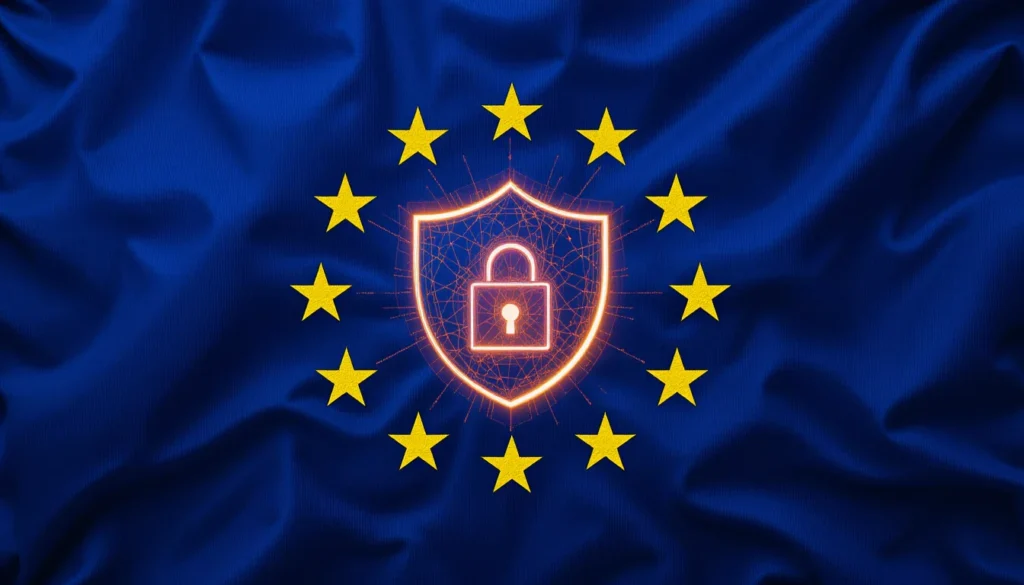Overview
The European Union has launched its own EU CVE Database, a monumental step toward reducing reliance on the U.S.-dominated National Vulnerability Database (NVD). Aimed at enhancing regional cybersecurity independence, this initiative marks a pivotal moment in Europe’s digital sovereignty strategy.
Key Facts
- Focus Keyword: EU CVE Database
- Launch Date: June 2025
- Managed by: European Union Agency for Cybersecurity (ENISA)
- Purpose: Local tracking of software vulnerabilities
- Goal: Reduce dependency on U.S.-based databases like the NVD
- Accessibility: Publicly available and aligned with international CVE standards
- Major Stakeholders: ENISA, EU Member States, CERT-EU, and private-sector partners
What’s Verified and What’s Still Unclear
✅ Verified:
- ENISA confirmed the database is now live.
- The EU CVE Database is synchronized with global CVE standards.
- It includes APIs for developers, threat researchers, and CERT teams.
❓ Unclear:
- How frequently it will update compared to the U.S. NVD.
- Whether all EU vendors are mandated to report CVEs to the new system.
- Long-term funding and governance structure beyond 2025.
Timeline of Events
- March 2023: ENISA proposes the need for a European vulnerability repository.
- October 2023: Cyber Resilience Act (CRA) gains momentum, stressing local data control.
- January 2024: Funding approved for pilot testing.
- May 2025: Testing concluded with successful pilot in Germany and France.
- June 2025: Official launch of the EU CVE Database.
Who’s Behind It?
The European Union Agency for Cybersecurity (ENISA) led the project, with strong backing from the European Commission and CERT-EU. Contributions also came from private vendors across the EU tech landscape including antivirus firms, software vendors, and infrastructure providers.
Public & Industry Response
Cybersecurity experts across the EU have largely welcomed the EU CVE Database as a long-overdue initiative. European tech companies appreciate having a localized repository, which they believe will lead to quicker response times and better regulatory alignment. However, some warn that duplicating efforts from the NVD may create confusion or inconsistencies unless both systems maintain tight synchronization.
What Makes This Move Unique?
Unlike other regional databases, the EU CVE Database is not just a mirror of existing platforms. It introduces localized metadata, multilingual support, and stronger privacy-aligned data handling—key concerns for EU entities following GDPR and the Cybersecurity Act.
Moreover, the database supports:
- Real-time threat mapping for critical infrastructure
- Risk-based prioritization that considers EU-specific threat landscapes
- Automated feeds for enterprise security tools via open APIs
This makes the EU CVE Database not just a clone, but a tailored solution for Europe’s regulatory and operational environment.
Understanding the Basics
A CVE (Common Vulnerabilities and Exposures) entry is a unique identifier for a known cybersecurity vulnerability. Historically, most CVEs have been managed and published via U.S.-based systems like MITRE and the National Vulnerability Database (NVD). The EU CVE Database allows Europe to catalog and respond to vulnerabilities from its own perspective, reducing risk exposure due to external dependencies.
What Happens Next?
- Mandatory Reporting: EU software vendors may soon be required to submit CVEs to the local database.
- Integration: Expect major security tools and platforms to begin integrating with the EU CVE Database API.
- International Cooperation: ENISA has hinted at cross-referencing with non-EU databases to prevent fragmentation.
- Expansion: A roadmap for incorporating IoT and industrial systems vulnerabilities is in development.
Summary
The EU CVE Database represents a bold and necessary step toward digital self-reliance for the European Union. By developing a homegrown repository for tracking and analyzing cybersecurity vulnerabilities, the EU is asserting control over one of the most critical aspects of national and regional cyber defense. While challenges remain, this initiative is poised to become a foundational pillar in Europe’s broader cybersecurity framework.
